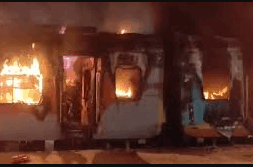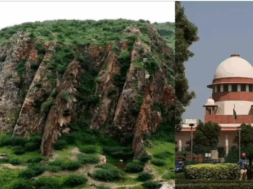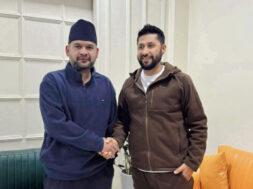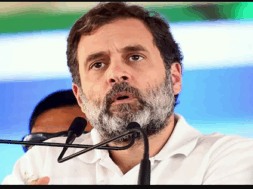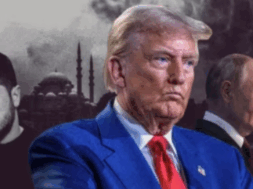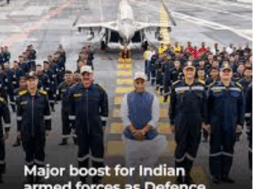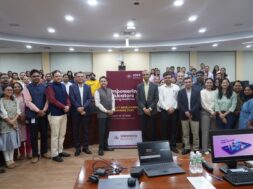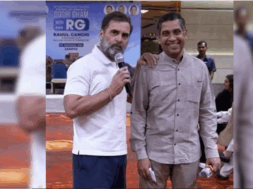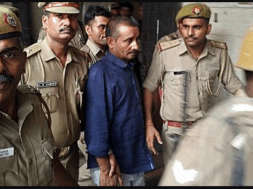
Roving Periscope: With PPP twisting his arm, Nawaz nominates Shehbaz as the next PM
Virendra Pandit
New Delhi: Since Mian Muhammed Nawaz Sharif remained in self-exile in London (2018-2023), the Pakistan Army selected his brother Shehbaz to replace friend-turned-foe Imran Khan as the Prime Minister in April 2022. Now, as the Sharif Senior cannot become the PM, he has selected his younger brother Shehbaz to succeed him.
According to the media reports, the Bhutto-Zardari-run Pakistan People’s Party (PPP) had two conditions to support the Sharifs’ Pakistan Muslim League (Nawaz): either make Bilawal Bhutto the PM or make his father Asif Ali Zardari the President.
Two-time PM, Nawaz did not want either sniffing down his neck in his potential third term. He had, after all, been fighting against the Bhuttos for decades.
That made Shehbaz lucky a second time, as the two major family-run parties announced a post-poll coalition on Wednesday to cobble up a military-supported government. There was still confusion if the PPP would merely support the Shehbaz government from the outside or join it as a partner.
Despite winning the most seats (93) as independent candidates, Imran Khan’s Pakistan Tehreek-e-Insaf (PTI) fell short of a majority, prompting the PML-N (80) and PPP (54 seats) to collaborate. The PML(N) has also secured the support of a dozen independent winners and trying to poach into PTI’s flock of independents.
But the two dynastic parties might be walking into each other’s traps.
A press conference announcing the coalition on Tuesday featured prominent leaders, including Shehbaz Sharif (PML-N), Asif Ali Zardari (PPP), and representatives from other smaller parties. Shehbaz Sharif, the PML-N President, emerged as the potential candidate for the premiership.
To keep the PPP in check, Shehbaz also expressed a willingness to include Imran Khan’s PTI in the government for the “betterment of the country.”
Smelling the rat. Asif Ali Zardari, co-chairman of PPP, also advocated for “inclusivity” by suggesting talks with Imran Khan’s PTI.
Both the contenders are keeping each other guessing and have kept the door open for Imran Khan’s potential cooperation.
According to Dawn, Bilawal Bhutto-Zardari acknowledged his party’s insufficient mandate to lead the government. Citing the PTI’s refusal to collaborate, he said the PPP accepted the PML-N’s invitation.
PML-N leader Marriyum Aurangzeb announced that Nawaz Sharif, 74, has nominated his younger brother Shehbaz Sharif, 72, as the next Pakistan PM pick. Maryam Nawaz, Nawaz Sharif’s daughter, was designated as the coalition’s candidate for the chief ministership of Punjab province.
The PML(N)-PPP coalition faces the challenge of forming a government with a minimum of 169 seats and potentially reaching two-thirds majority of 224 seats in the 336-member Pakistan National Assembly.
The Election Commission of Pakistan has confirmed that the coalition led by Shehbaz Sharif, comprising PML-N, PPP, MQM-P, PML-Q, IPP, and BAP, has secured a total of 152 general seats in the February 8 elections to the National Assembly. According to Dawn, with the addition of 60 women and 10 minority seats, the coalition is poised to surpass the minimum requirement of 169 seats needed to form a government.
However, the crucial hurdle remains to reach the 224-seat mark for a two-thirds majority in the 336-member National Assembly.
The fate of reserved seats depends on the decisions of 101 independents, including 92 PTI-backed independents, who emerged victorious.
The joint press conference left several questions unanswered, sparking uncertainty about the coalition’s stability and ability to form a functional government. The absence of details on the distribution of key roles and the process of government formation underscored the need for further negotiations among the coalition partners.
Allegations of vote-rigging during the elections, with the nation’s mobile network being switched off on election day, added to controversy. Imran Khan announced plans to challenge the election results in the Supreme Court.
The success of this coalition in forming the next government hinges on effective negotiations, internal cohesion, and addressing the challenges posed by allegations of election irregularities.


